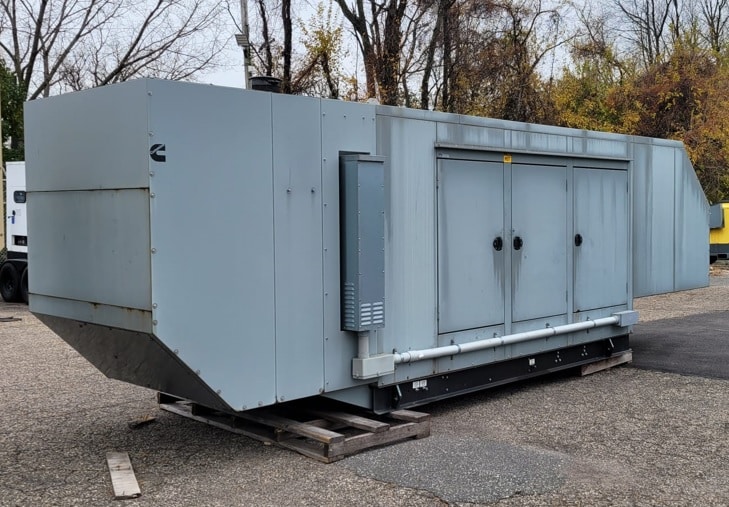Flaring Gas: What Is It & Why Is It Done?

Flare gas is common out in oilfields where drillers in the oil & gas industry are digging for crude oil. Often, drillers come across a pocket of methane gas which is commonly considered a byproduct of the drilling process. Although this is one of the more common scenarios, flare gas can be apparent in chemical processing of petroleum, landfill gas, wastewater treatment, and can even be found when within shale sites or coal mines.
Flaring gas is the process of combusting (literally burning) the unearthed methane gas to clear it from the dig site. While it has been one of the more popular ways to eliminate natural gas pockets revealed during drilling, it is not without its controversies and downsides.
Why Flare Gas?
Some of the most cited reasons for flaring gas are to prevent any potential risks of explosions by relieving pressure in unearthed gas pockets or to safely combust the gas without allowing large quantities of gas to vent, or most arguably – that it is better for the environment than simply allowing the methane gas to vent.
While preventing any potential explosions may be a good reason to flare gas, what about some of the other reasons?
Aside from flaring gas, one of the other main options available previously was to allow the gas to vent. Venting gas is a process where oil & gas companies simply allow any methane gas to release into the atmosphere to clear out a work site. A big issue with venting gas is that methane gas released into the atmosphere produces greenhouse gas effects with emissions ratings that are worse than carbon dioxide. Therefore, flaring gas was long considered one of the better alternatives between the two.
Flaring gas resulted in lower emissions of methane gases and higher emissions of carbon dioxide, which was considered less harmful for the environment when compared to methane gas. While this may sound like it is the better option between the two, it is no longer considered the soundest solution. When gas is flared, it does not burn up 100% of the gas and estimated to only burn up 75% – 90% of the methane gas during the combustion process.
Why Don’t We Use the Gas Instead of Flaring It?
This has been one of the biggest challenges throughout the oil & gas industry. Previously, pockets of unearthed gas (often known as wellhead gas or stranded gas) was considered a loss and particularly damaging to the environment is left alone. When a team is deployed out into the field at a project work site, they were often ill-equipped with constructing a gas pipeline that could feed the gas supply to the main utility. In other instances, their project site may have been too far remote from the closest utility pipeline, so the gas would either need to be vented or flared. Most importantly, depending on where the crude oil extraction is taking place – there may be restrictions in place that prevent companies from selling any wellhead or stranded gas. This means while a company may be allowed to dig for and extract crude oil for processing and sale, they may not be allowed to extract the natural gas and sell it on the energy marketplace.
With the advancement of gas technology, it has become possible to capitalize on these pockets of stranded or wellhead gas to utilize this natural resource without allowing it to go to waste, while minimizing the impact on the environment.
A good example of using technology to reduce waste and lower methane emissions are mobile cryptocurrency mining containers. These mobile containers store cryptocurrency miners or super computers configured to mine for cryptocurrency. Equipped with a cooling system to keep the equipment running in optimal temperature, they are powered by natural gas generators. These containers are often configured with pipes and additional equipment, such as fuel separators that remove water or other debris from the methane gas and some come with compressors that pressurize the methane before it feeds into the natural gas generator to achieve more steady power output. Methane gas combusted within a natural gas generator result in no release of methane emissions and turns completely into carbon dioxide emissions. This is seen as a more environmentally friendly option while capitalizing on stranded gas or wellhead gas pockets that are revealed during crude oil extraction.
Some additional alternatives are decentralized microgrids that center around the use of electrical distribution equipment and natural gas generators that operate off the main utility grid, liquified natural gas which can be used to store unearthed gas and considered a safer option compared to flaring, and compressing natural gas, which allows methane to be pressurized and stored in gas cylinders. There are also portable natural gas generators being produced that can run off stranded gas found at well sites to power equipment needed for off-grid projects. With the advancement of technology and new ideas sparking from innovation, there are many more applications where stranded gas is a thing of the past.
As companies adapt and innovate when it comes to flare gas, better results follow. For example, companies looking to adhere to local emissions limits may install traditional incinerators, which burns up any associated wellhead gas that not only converts methane gas gas emissions to carbon dioxide emissions and water, but also improves local air quality all while helping a company maintain compliance with emissions regulations.
Are There Any Regulations to Reduce Flare Gas?
While every country and region differ, there is an overall movement to reduce gas flaring to lower methane gas emissions that bring down greenhouse gas effects. Some of these steps include agreements with governments and oil companies to cease routinely flaring gas in any new oil field developments and to bring an end to already existing routine flaring sites. Some areas have banned flaring gas completely and have made flaring gas an illegal activity.
By adapting to new technology and innovation that can utilize wellhead gas, this can help contribute to reducing overly harmful emissions and complying with local and global regulations when dealing with flaring gas.
If you have more questions about flaring gas or are interested in other applications that utilize wellhead/stranded gas, reach out to us at Woodstock Power Company
610-658-3242
Or fill out our Contact Form and our project managers will get back to you shortly!
THE WOODSTOCK POWER COMPANY EXPERIENCE
We have industry experts that focus on commercial generator sets, with in-depth industry knowledge to help you choose the right generator that fits your needs.
We are industry leaders in buying and selling used generators to fit the needs of many businesses, including commercial, industrial, medical, agricultural, and university. This includes facilities like hospitals, better living centers, nursing home, airports, hotels, resorts, restaurants, retail centers, manufacturing, production, and more.
Our experts are ready to assist you from answering any questions you may have about power generator sets to helping you find the best selection in our inventory based on:
- Peak & Average Power Requirements
- Fuel Preference (Natural Gas or Diesel)
- Portability & Stationary Power
- Prime & Standby Generator Requirements
- Available Space & Exhaust Restrictions
We carry only the most top rated new, used, and surplus power generator sets for sale, providing you with a great value generator that will fit your budget.
Our generators have been thoroughly inspected, serviced, and verified, which ensures that you will be buying a quality generator that you can depend on. If a generator is not up to par with industry standards, we make all necessary repairs or modifications, and fully test every generator before we sell. This ensures a full turnkey generator that’s ready to fire up and go!
Due to our wide selection of generator sets, we’re confident that we can find the model that best suits your operational needs and budget.
We also buy used generators in good quality, if you have already upgraded and you’re looking to sell your older model.
Feel free to contact us with any questions, concerns, or inquiries to learn more about the Woodstock Power Company experience and the quality level of products & services we provide.

